Fish and napkins
THE SWORD
In Europe in the Middle Ages, people used large tablecloths to wipe their hands and mouths. Around 300 years ago, the napkin was introduced to separate the function of the tablecloth from that of the mouthwash. But it was only in the 18th century that a custom, mainly in France, which can now be called a culture of eating, in which the napkin had a specific place, developed. At that time, napkins, often large and magnificently folded, were often used only as decoration. Today, by contrast, we use them. At the court of Franz Joseph (1830-1916), the most expensive damask napkins were used, embroidered with the imperial coat of arms. These napkins were folded according to the traditions of the imperial court. In Austria, these old traditional forms are still sometimes used at state banquets.
In the days of our grandparents, large, hand-embroidered textile napkins with beautiful designs and monograms were used. These were part of the dowry and were so cherished and cared for that they often served for generations to come.
When, in the 1960s and 1970s, Germany, like other Western countries, developed a strong demand for hygiene, the highly practical paper napkin almost completely replaced the textile napkin. These napkins were not folded, but were placed folded on the table. The napkins were at first only in one colour, then different patterns appeared. Fish restaurants and fish restaurants started to introduce napkins with different fish and sea animals. Partly lifelike depictions of fish and partly stylized, artistic drawings were added to the napkins. More recently, logos, contact details and advertising for companies and restaurants have been added to the napkins.
Based on the graphics on the napkins, we can distinguish between those that are the same on each of the four folded parts and those that have different graphics on each of the four folded parts. There are napkins with one image on half of the napkin and the same image as a mirror image on the other half. There are also those which, when unfolded, give a complete picture and fold it up.
Although napkin collecting is supposed to be a toddler's pastime, I hope that the ones I have collected and published here will bring joy to those interested in similar craziness, and if anyone has a similar napkin not shown here, I'm happy to swap.
FRESHWATER AND SEA FISH THEMED NAPKINS
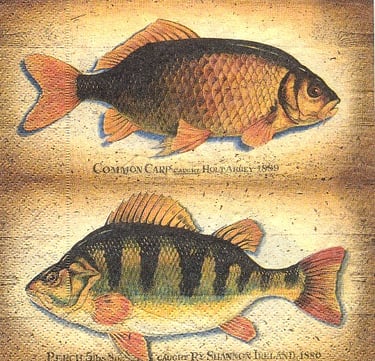

The napkin features copies of carp and perch paintings from the 1880s.

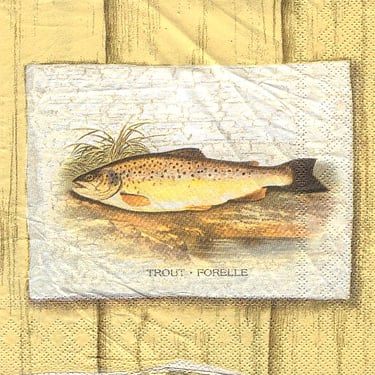
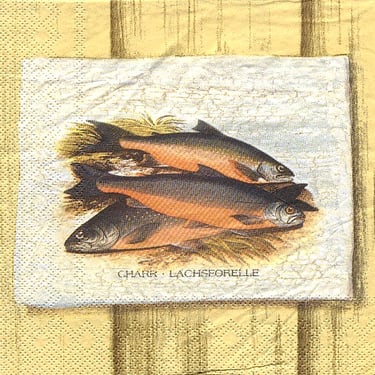
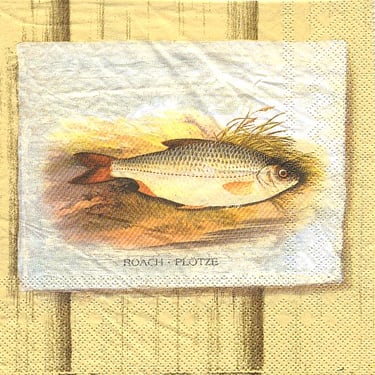
There is also an older depiction of a fish on the napkin, with the names of the fish in English and German.

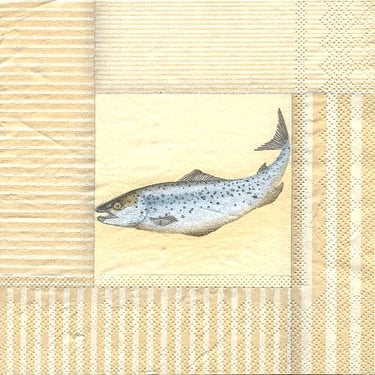
This napkin is adorned with a drawing of a salmon and a makerala, framed on each side by stripes of varying thickness.
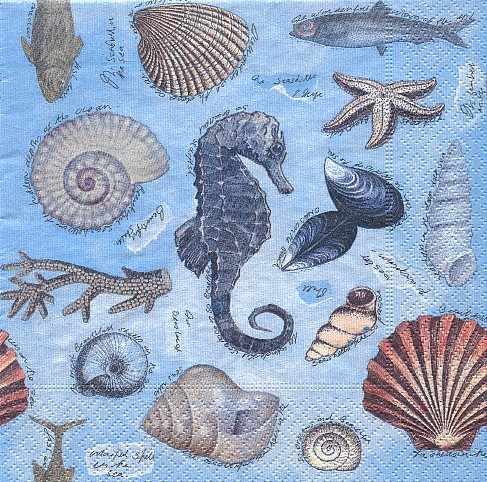

On a sea-blue background with very nice graphics, you can see images of marine animals from snails to shells, starfish to fish.

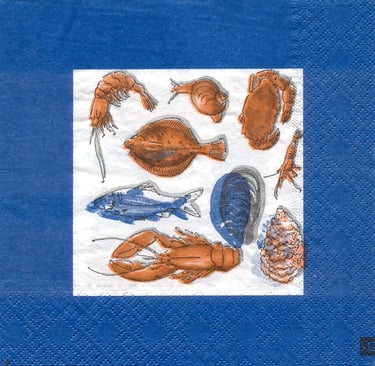

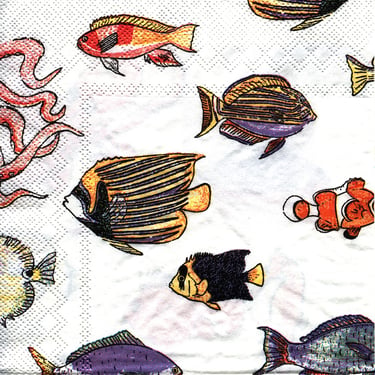
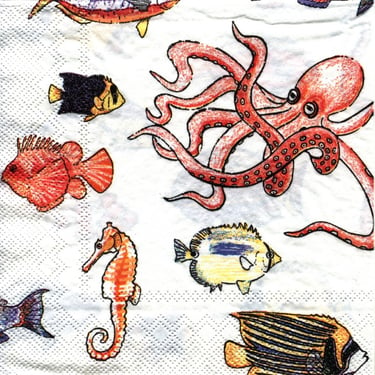
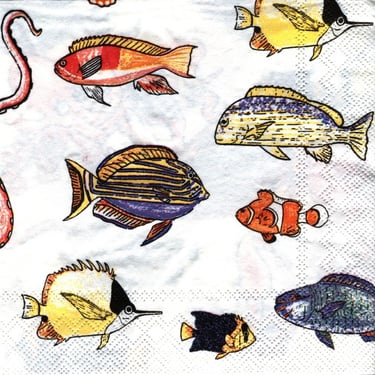
Also napkins with sea animals, which are of course very well made, but unfortunately the printing was not perfect. The inking and the contour lines slipped.
FISHING THEMED NAPKINS

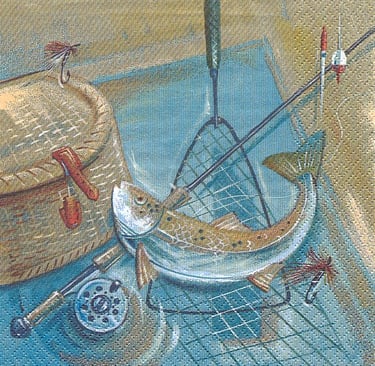
I received this faux trout napkin from a very kind college student. I think every angler would love to have this for his lunch..


Another napkin with fake flies and trout.

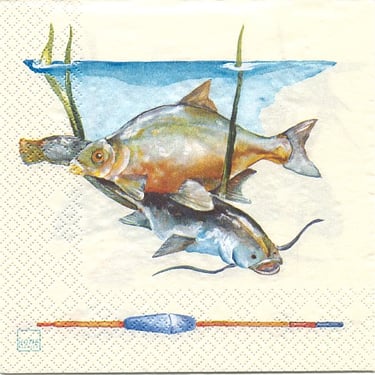
I got this napkin, also with a fishing theme, from my friend Marczy.

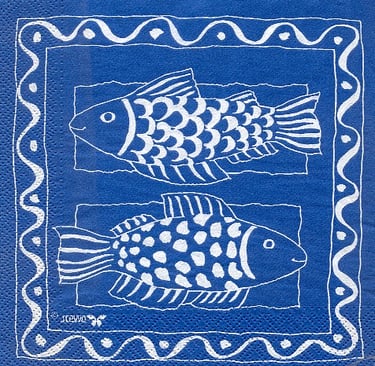
A stylized depiction of a fish, reminiscent of the work of blue painters.
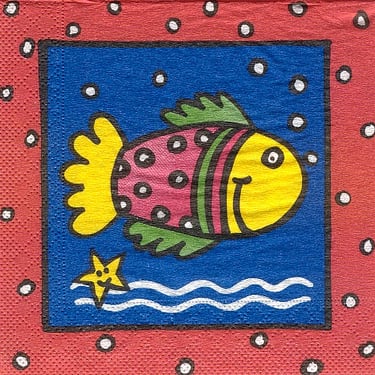

This happy little fish with a smiling star is a lovely children's napkin, and the one next to it was most likely made by the same graphic designer.
FISH, CRAB AND SEAFOOD THEMED NAPKINS

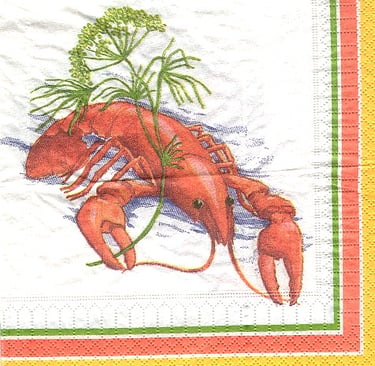
A very nice depiction of a boiled crab, the dill flavour of which is indicated by the napkin. (Denmark)
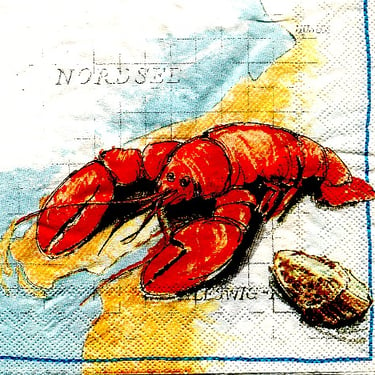
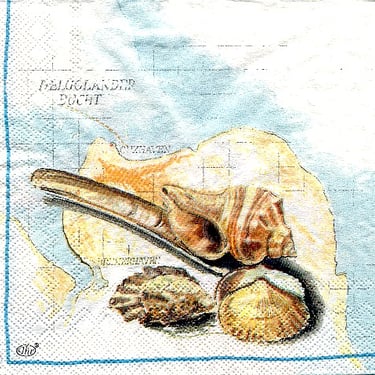
Another cancer and the other side of the napkin.
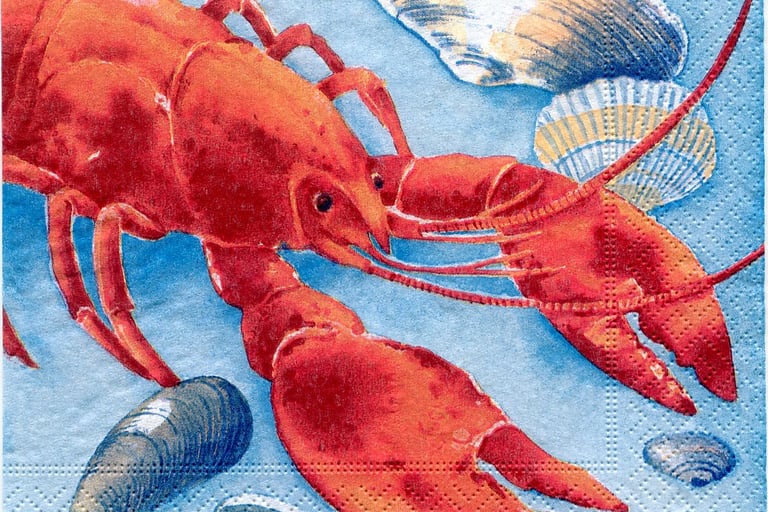

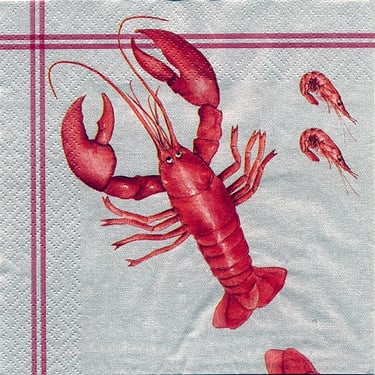
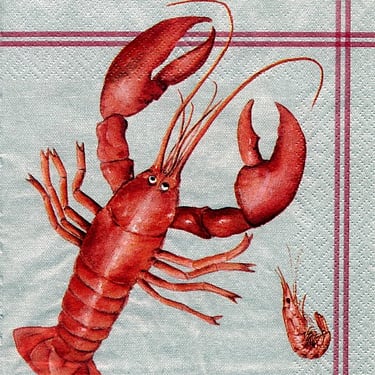

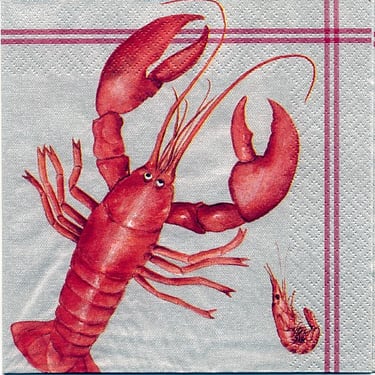
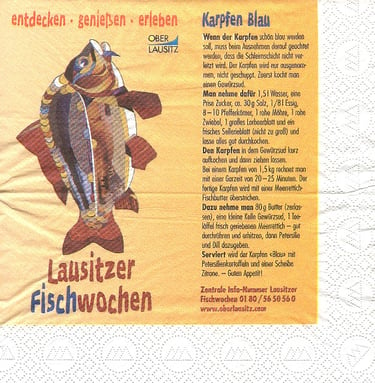


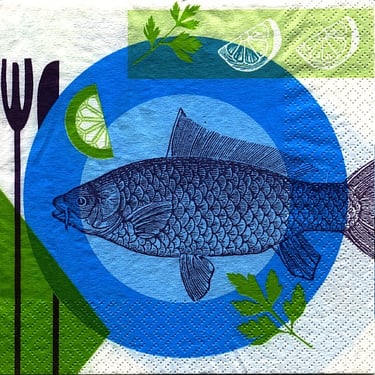
In Germany, they realised that one very important part of fish marketing is that if you've eaten a delicious fish in a restaurant, you might be able to make it at home from a recipe printed on a napkin (if you haven't smeared it so much that you can't read it, of course.)
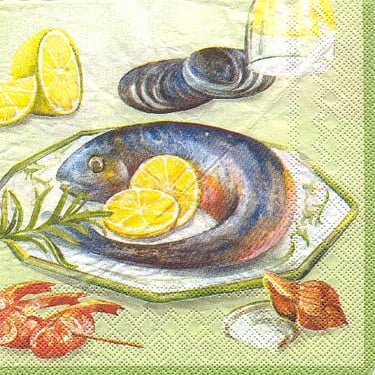
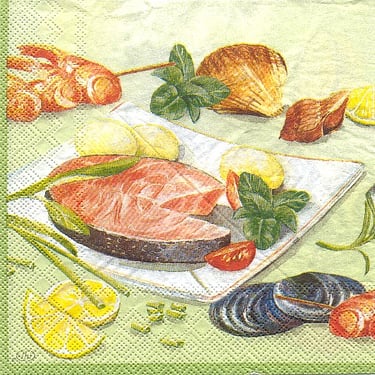
The napkin shows a salmon cooked in one piece, then sliced, with other seafood and lemon.

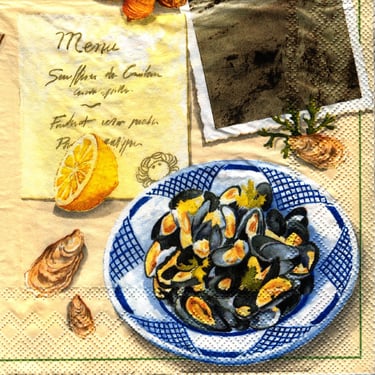

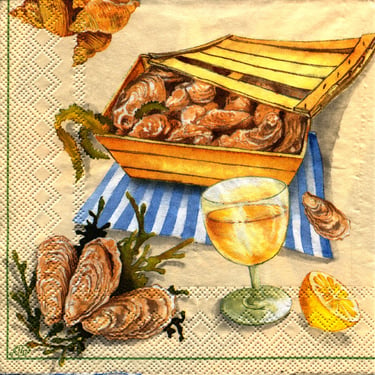
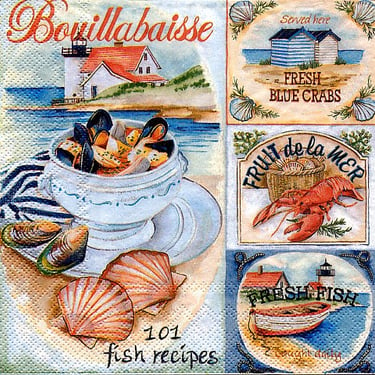
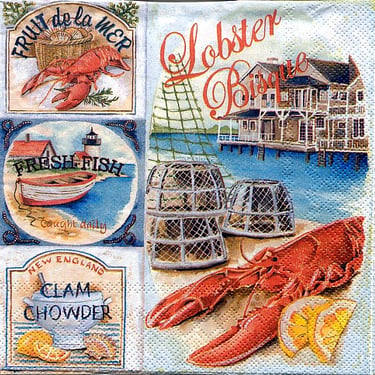
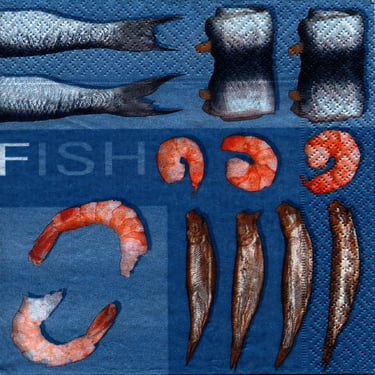
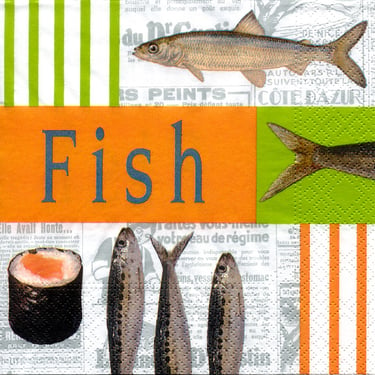
COMPANY NAPKINS
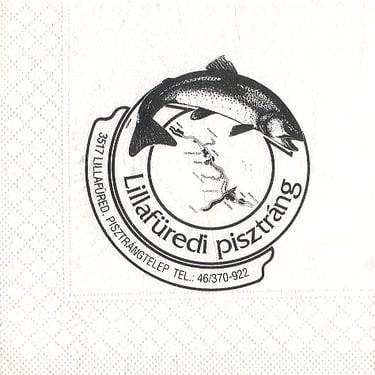
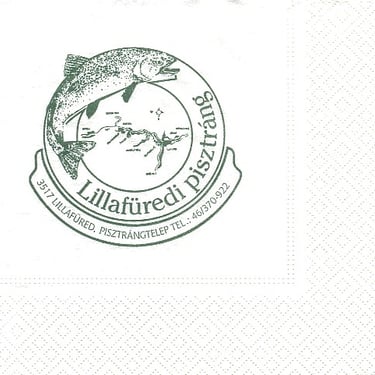
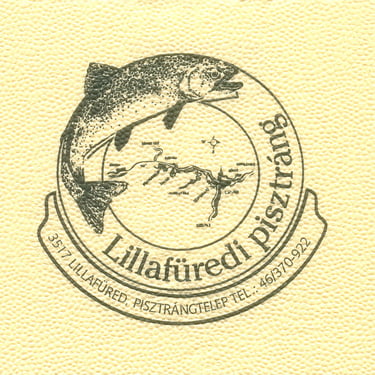
"Every saint has his hand out for himself" So let us come up with our own corporate napkin. The graphic was created by Ernő Fehér, graphic artist and photographer. Unfortunately, with the first napkin, we didn't think to explain to a printer how the napkin would be placed on the table, so we turned it around and put our logo on it. For the rest, the direction was right.
